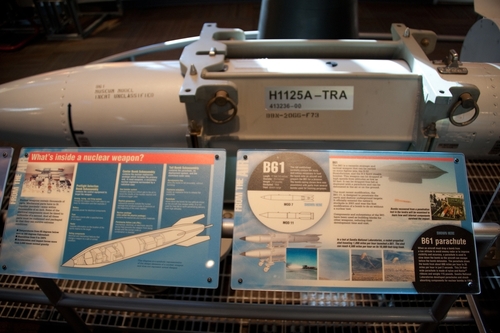
Although nuclear disarmament and de-escalation has been the focus for years, last week the U.S. Department of Defense (DoD) changed course in a proposal to Congress, wherein it sought approval for a modern variant of the B61 nuclear gravity bomb.
“Today’s announcement is reflective of a changing security environment and growing threats from potential adversaries,” Assistant Secretary of Defense for Space Policy John Plumb said. “The United States has a responsibility to continue to assess and field the capabilities we need to credibly deter and, if necessary, respond to strategic attacks, and assure our allies.”
If approved, Department of Energy’s (DOE) National Nuclear Security Administration (NNSA) would take the lead on production of B61-13. That bomb would be deliverable by modern aircraft for use against harder and large-area military targets, and as a replacement for some of the B61-7’s in the current nuclear stockpile.
The B61 has numerous variants, with blast yields ranging from 0.3 kt to 400 kilotons. For reference, the bombs dropped on Hiroshima and Nagasaki at the end of WWII had a yield of about 15 and 20 kilotons, respectively.
In the case of B61-13, DoD aims to take advantage of the current production capabilities being used for the B61-12 variant, and intends to keep that variant’s safety, security and accuracy features. Writing in a fact sheet related to the effort, DoD added that B61-13 will not actively increase the number of weapons in the U.S. stockpile, as the number of B61-12s in production will be lowered to incorporate the new G61-13s.
All of this was previously called for in the 2022 Nuclear Posture Review (NPR), which noted that U.S. competitors were not holding back on the nuclear sector. Rather, they were actively expanding, diversifying and modernizing their nuclear forces and increasingly turning to nuclear weapons to flex their capabilities.




